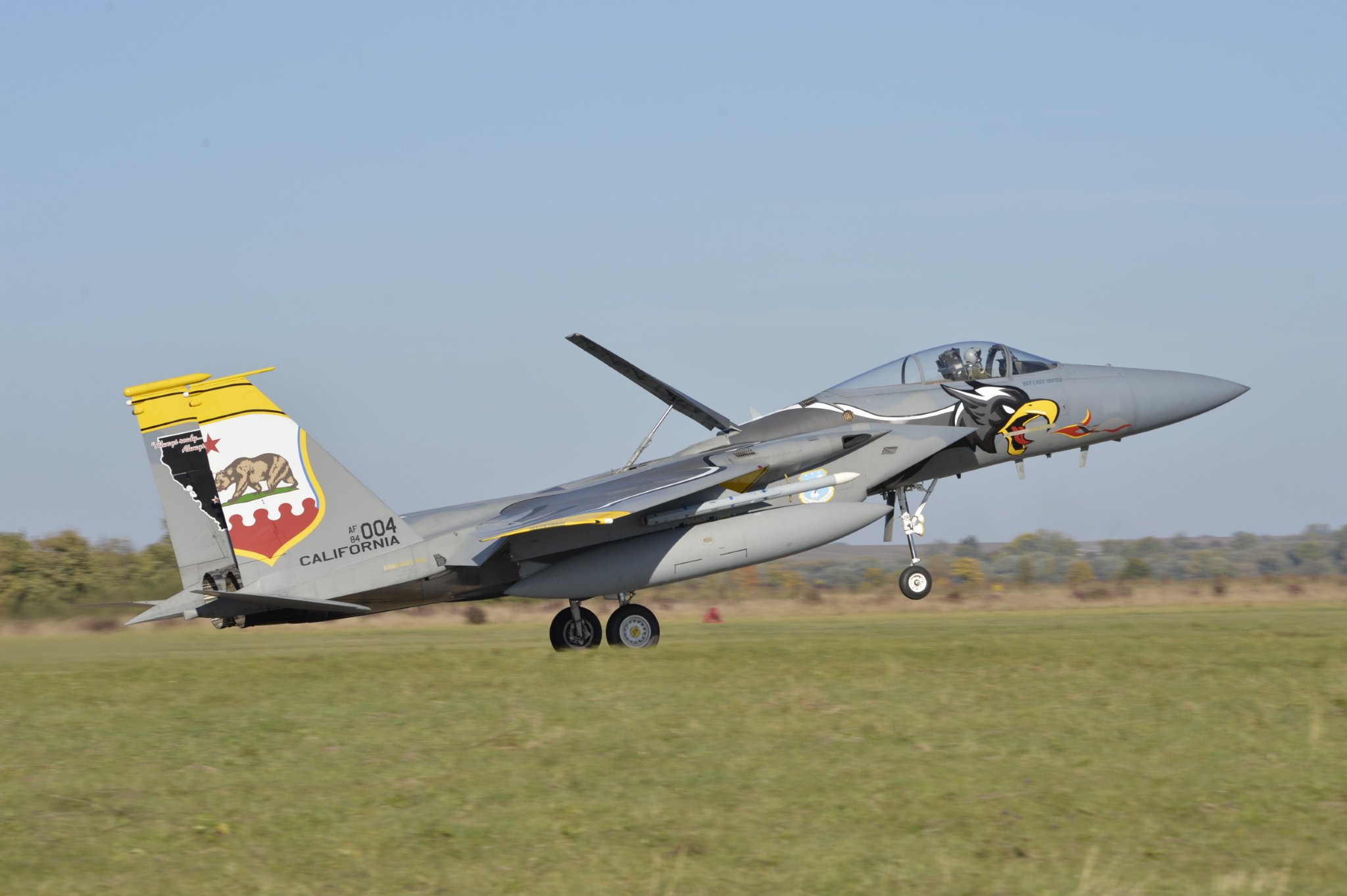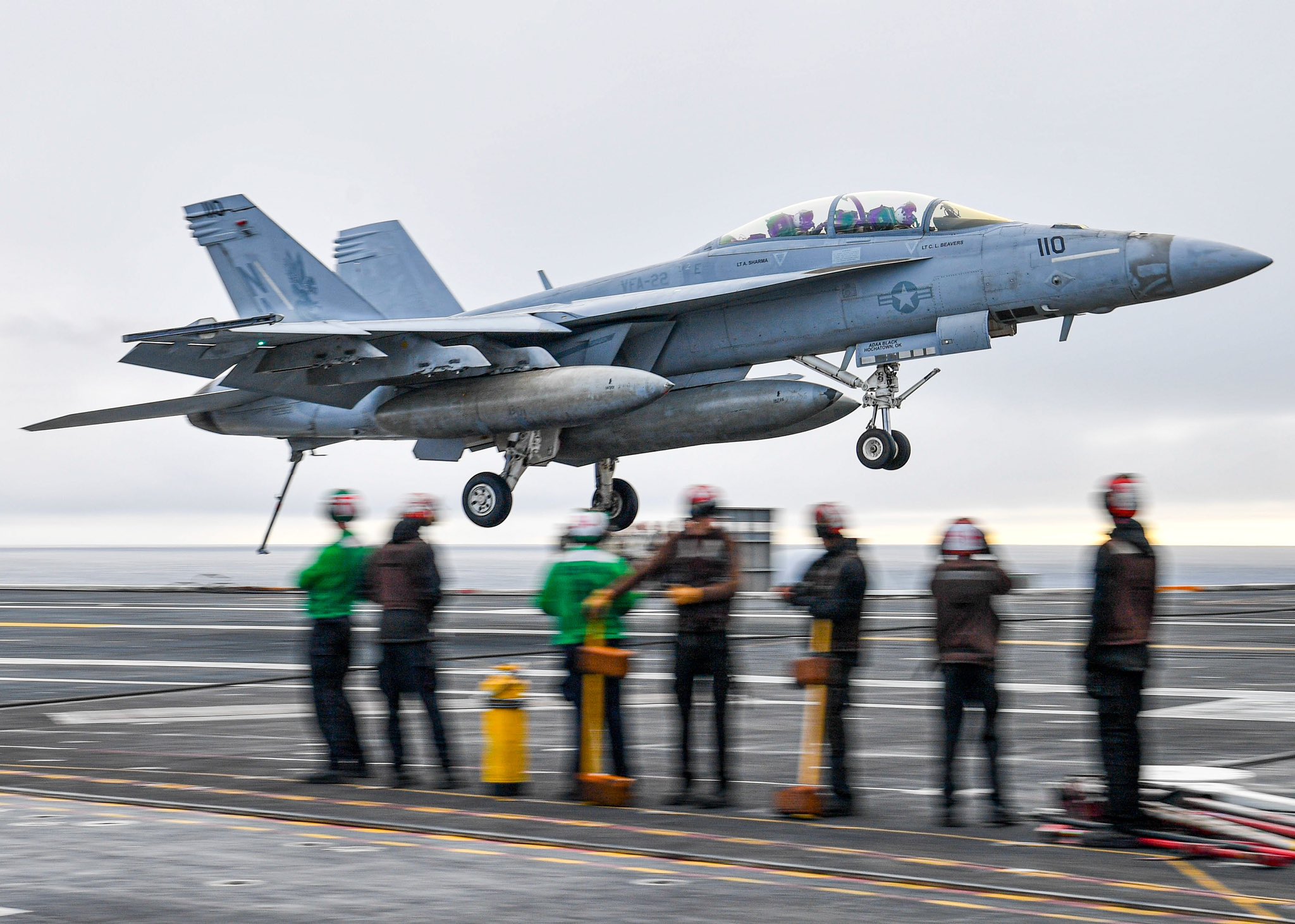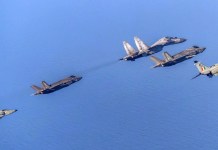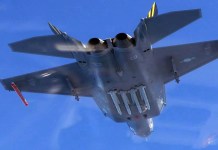Actor Tom Cruise kicked off a friendly interservice clash between the US Navy and the US Air Force (USAF) in 2018 when he announced that the production of his film Top Gun: Maverick had begun.
6000 KM Away From Ukraine, Russia Moves Its Nuclear Bomber Fleet From Engels Air Base To The Far East — Reports
Iran Fires Ship-Launched Loitering Munition To Attack A Hostile Naval Base; Flaunts Its UAV Power In New Video
Cruise shared a promotional picture on Twitter featuring ‘Maverick’ (the callsign of Tom Cruise’s character in the movie) looking at a F/A-18E/F Super Hornet with the phrase “Feel the Need” superimposed on it.
The USAF responded to this tweet, saying, “If Maverick had a need for speed, he’d hop into one of our F-15E Strike Eagles! #DYK: They have a top speed of 1,875 miles per hour.”
If Maverick really had a need for speed, he could hop into one of our F-15E Strike Eagles! #DYK: They have a top speed of 1,875 miles per hour. https://t.co/RQtJoWfGJo
— U.S. Air Force (@usairforce) May 31, 2018
This stirred an entertaining exchange between the USAF and US Navy, which went back and forth, with even the Air Force Space Command jumping into the debate, highlighting the 6000 miles-per-hour velocity of its space-launch vehicles.
It appears that the older USAF F-15C Eagle variant may have settled this feud on behalf of the F-15E Strike Eagle, at least for the time being, by scoring a kill against a F/A-18F Super Hornet, piloted by an elite TOPGUN pilot in a recent mock fight.
Fighter pilots from the 194th Fighter Squadron (194th FS) 144th Fighter Wing, California Air National Guard, based at Fresno Air National Guard Base, California, challenged US Navy Fighter Weapons School (TOPGUN) students during their graduation capstone event held in November 2022 at Naval Air Station Fallon, Nevada.
Fighter pilots and airframes from across the US military are invited to oppose the TOPGUN students during their capstone events, which comprise simulated one-on-one combat engagements, as per the press release issued by the 144th Fighter Wing on December 29, 2022.
“Our unit was honored to be invited to participate with these elite Navy pilots. These partnerships provide unique and valuable flying opportunities for everyone involved,” said Lt. Col. David Allamandola, 194th FS pilot.
F-15 Eagle Vs F/A-18F Super Hornet
The 194th FS is equipped with the F-15 Eagle, which replaced the F-16, the unit’s previous aircraft, in 2013. Apart from the F-15s, this year’s graduating TOPGUN pilots flew against F-16s, F-35s, and F-18s during the event.
“It is important to train with other branches frequently,” US Air National Guard Capt. Dane Ruhnau, 194th FS pilot said. “When the fight happens, we will need to execute as a joint force to be successful against a near-peer adversary.”

Ruhnau was one of the five 194th FS pilots who participated in the event and was able to score a kill against a F/A-18F
“You don’t know what airframe you’re fighting until you arrive at the merge. At the merge, you must visually identify your counterpart and adjust your plan according to what you see. In my engagement, I merged with a F/A-18F Super Hornet. I knew he would have the advantage in low-speed maneuvering, and I would have the advantage in power,” Ruhnau said.
‘Merge’ refers to a very close, neutral pass made by opposing aircraft when they first meet in an air-to-air engagement, generally heading in opposite directions.

The F-15 Eagle is powered by two Pratt & Whitney F100-PW-100 turbofan engines, each producing around 23000-25000 pounds of thrust (with afterburners), providing a very high thrust-to-weight ratio (TWR) of about 1.19 according to some open sources.
By comparison, the F/A-18F Super Hornet is powered by two General Electric F414-GE-400 turbofans, reportedly producing 22,000 pounds of thrust each (with an afterburner), providing a TWR of only around 1.09.
Higher TWR means the aircraft is relatively light for the amount of thrust its engines produce. The F-15’s superior TWR allows it to accelerate rapidly, even while performing a vertical climb.
According to a former USAF F-15 pilot, Shari Williams, who shared her experience of a simulated dogfight with two Super Hornets on Quora, the F-15 could attain a speed of 185.2 kilometers per hour in about 3 seconds, while the F/A-18 would pick up around 111.12 kilometers per hour in the same time.

Furthermore, the F-15 also has low ‘wing-loading’ (the ratio of aircraft weight to its wing area), which, coupled with the Eagle’s higher TWR, allows the aircraft to make tight turns without losing speed.
To outmaneuver enemy aircraft, the fighter must be able to accelerate and turn faster, and the F-15 has an advantage over the F/A-18 in both of these factors.
F-15 Got Behind The F/A-18 To Get A GunShot
Ruhnau managed to gain an offensive position by using standard, high-aspect basic fighter maneuvers (HABFM). The details of the HABFM remain unclear, as Ruhnau only said that he performed a vertical loop to attain the offensive position.
“As the engagement progressed, I was able to maintain the offensive position by using my aircraft to perform a vertical loop to end up in the Hornet’s control zone,” Ruhnau said, adding, “From the control zone, I was able to get a gunshot on the Hornet before we had to terminate the fight for fuel.”
According to the US Naval Air Training Command’s Flight Training Instructions for BFM, a ‘Control Zone’ is defined as an area that is roughly 2,000-4,000 feet behind the Defensive aircraft, extending between 10-20 degrees on either side of its flight path.
After the two opposing fighters arrive at the merge, they can fly in the same or opposite directions. The direction flown relative to each other determines the ‘flow of the fight.’
There are two types of flows: the One-Circle flow and the Two-Circle Flow. If both aircraft turn toward the same direction after the merge, the flow is said to be “One-Circle” because both aircraft are turning around the same relative center to create one circle.

In One-Circle flow, the two aircraft are fighting nose-to-nose, each trying to turn inside the opponent’s ‘Turn Circle’ and get behind the opponent’s tail. So, an aircraft that can make tighter turns can attain an offensive position first.

If the two aircraft turn in the opposite direction after the merge, the flow is said to be ‘Two-Circle’ because each aircraft is now turning around different centers, creating two circles.

In the Two-Circle flow, the two aircraft are fighting nose-to-tail, wherein an aircraft with the higher turn rate (degrees per second) can get behind the opponent first and shoot it down.

The high-aspect BFM entails a fighter pilot enforcing the desired flow of the fight by initiating a turn after arriving at the merge.
Considering the F-15’s ability to make tight turns without losing speed and higher overall acceleration, the Eagle can outmaneuver the F/A-18F in either of the two flow types.
As earlier stated, Rahnau performed a vertical loop to get inside the Hornet’s control zone, so he must have moved vertically, either upward or downward, after arriving at the merge. When a fighter pilot chooses to move upward, it is usually to set a One-Circle flow.
Ruhnau described the feedback from the TOPGUN school after the event as overwhelmingly positive, and the 144th Fighter Wing now has a standing invitation to return.
- Contact the author at tanmaykadam700@gmail.com
- Follow EurAsian Times on Google News




